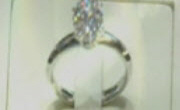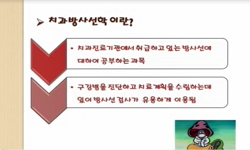There have been a lot of researches on Zhuxi`s the art&diterature thought in philosophical aspect, but not in aesthetical aspect, which is partly by reason of Lee theory`s underestimation about literature and art. Zhuxi`s attitude to literature and ar...
http://chineseinput.net/에서 pinyin(병음)방식으로 중국어를 변환할 수 있습니다.
변환된 중국어를 복사하여 사용하시면 됩니다.
- 中文 을 입력하시려면 zhongwen을 입력하시고 space를누르시면됩니다.
- 北京 을 입력하시려면 beijing을 입력하시고 space를 누르시면 됩니다.

중국철학 : 주희문예미학사상에 있어서 진,선.미의 관계 = Chinese Philosophy : The relation of Truth, Good, and Beauty in Zhuxi`s aesthetic of art&literature
한글로보기https://www.riss.kr/link?id=A40124374
- 저자
- 발행기관
- 학술지명
- 권호사항
-
발행연도
2003
-
작성언어
-
-
주제어
문도통일 ; 문예사상 ; 진 ; 선 ; 미 ; 윤리적인 미 ; Unity of Moon and Tao ; The art&literature thought ; Truth ; Good ; Beauty ; Ethical beauty
-
KDC
100
-
등재정보
KCI등재
-
자료형태
학술저널
- 발행기관 URL
-
수록면
325-347(23쪽)
-
KCI 피인용횟수
4
- 제공처
- 소장기관
-
0
상세조회 -
0
다운로드
부가정보
다국어 초록 (Multilingual Abstract)
There have been a lot of researches on Zhuxi`s the art&diterature thought in philosophical aspect, but not in aesthetical aspect, which is partly by reason of Lee theory`s underestimation about literature and art. Zhuxi`s attitude to literature and art is more positive than that of Lee theory`s in North Song Dynasty. We could understand his thought more clearly through his own definition of Truth, Good, and Beauty which found aesthetic rule of literature and art. Zhuxi not only acknowledges role of literature and art, but also prescribes immanent rule of art as means of mind-cultivation. that About Truth, Good, and Beauty, Zhuxi notes good work stems from genuine emotion, whereas bad one stems from false emotion and is made in artificial way, which need to be corrected, ``genuine emotion means real and true feeling. He notes that art work should express genuine emotion by all means, and only in that case get true life. Artist should create art work through his own true feeling, and only in that case grant his work true life. If he counter to natural order or try to restrict it, Truth cannot be the premise of Beauty as natural order. Good and Beauty are differentiated and connected each other at the same time. Zhuxi distinguishes sensuous beauty from ethical beauty for the first time, and consider they have different social functions. Zhuxi note that the unity of Good and Beauty is acted and developed through the unity of Moon and Tao.(文道統一). Good, the ethical, is from the harmony of natural Tao and social Tao, and Beauty is its form. The harmony of content of Good with form of Beauty requires the harmony of content of Tao with form of Moon. Zhuxi`s definition of Beauty is developed out of Confucianism, and his though of the relation of Truth, Good, and Beauty has characteristic of classical aesthetics of ancient China.
동일학술지(권/호) 다른 논문
-
한국철학 : 율곡 연구의 성과와 반성 -철학 사상을 중심으로-
- 동양철학연구회
- 이동희 ( Lee Dong Hui )
- 2003
- KCI등재
-
한국철학 : 이간의 미발론 -주희의 중화론과 연관하여-
- 동양철학연구회
- 안은수 ( An Eun Su )
- 2003
- KCI등재
-
- 동양철학연구회
- 이종우 ( Lee Jong U )
- 2003
- KCI등재
-
한국철학 : 원교의 서예미학사상 -『서결』을 중심으로-
- 동양철학연구회
- 송하경 ( Song Ha Gyeong )
- 2003
- KCI등재
분석정보
인용정보 인용지수 설명보기
학술지 이력
| 연월일 | 이력구분 | 이력상세 | 등재구분 |
|---|---|---|---|
| 2026 | 평가예정 | 재인증평가 신청대상 (재인증) | |
| 2020-01-01 | 평가 | 등재학술지 유지 (재인증) |  |
| 2017-01-01 | 평가 | 등재학술지 유지 (계속평가) |  |
| 2013-01-01 | 평가 | 등재학술지 유지 (등재유지) |  |
| 2010-01-01 | 평가 | 등재학술지 유지 (등재유지) |  |
| 2008-01-01 | 평가 | 등재학술지 유지 (등재유지) |  |
| 2005-05-31 | 학술지명변경 | 한글명 : 동양철학연구(Journal of Eastern Philosophy) -> 동양철학연구외국어명 : 미등록 -> Journal of Eastern Philosophy |  |
| 2005-01-01 | 평가 | 등재학술지 선정 (등재후보2차) |  |
| 2004-01-01 | 평가 | 등재후보 1차 PASS (등재후보1차) |  |
| 2003-01-01 | 평가 | 등재후보학술지 선정 (신규평가) |  |
학술지 인용정보
| 기준연도 | WOS-KCI 통합IF(2년) | KCIF(2년) | KCIF(3년) |
|---|---|---|---|
| 2016 | 0.54 | 0.54 | 0.59 |
| KCIF(4년) | KCIF(5년) | 중심성지수(3년) | 즉시성지수 |
| 0.55 | 0.54 | 1.394 | 0.1 |




 KISS
KISS







